Homage to Fromage
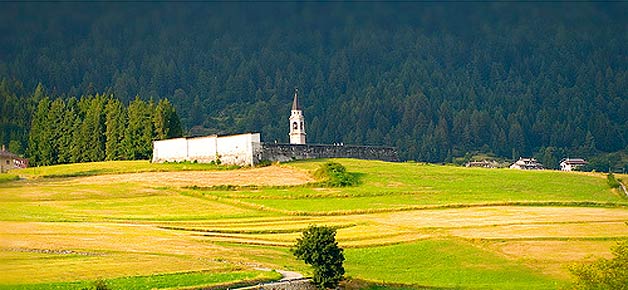
The small town of Asiago has only 7,000 inhabitants, yet it gave birth to one of the oldest and most recognized producers of cheese in Europe. Today, Asiago DOP is renowned for its orthodox methods of production and attention to detail.
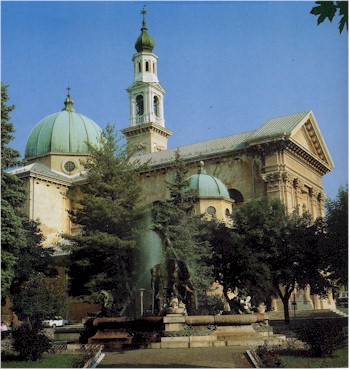
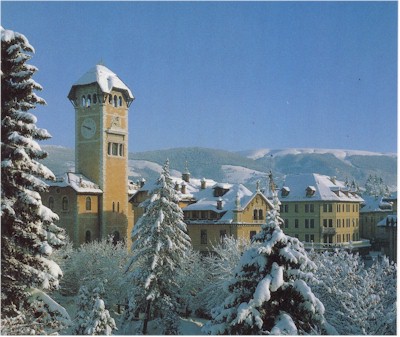 Asiago DOP cheese’s authentic, time-honored manufacturing process was originally developed during the town’s establishment in the year 1000. Although it had been produced for several centuries, Asiago only became an important market for cheese in the early 1500s. Since that time the production of Asiago cheese has expanded from the Asiago Plateau to the upper Po Valley and the mountains of Trento. Today, as officially recognized areas by Italian law, four areas, Vicenza and Trento, and parts of Treviso and Padua, encompass Asiago’s zone of production for the collection of milk and the production of cheese.
Asiago DOP cheese’s authentic, time-honored manufacturing process was originally developed during the town’s establishment in the year 1000. Although it had been produced for several centuries, Asiago only became an important market for cheese in the early 1500s. Since that time the production of Asiago cheese has expanded from the Asiago Plateau to the upper Po Valley and the mountains of Trento. Today, as officially recognized areas by Italian law, four areas, Vicenza and Trento, and parts of Treviso and Padua, encompass Asiago’s zone of production for the collection of milk and the production of cheese.Making the Cheese
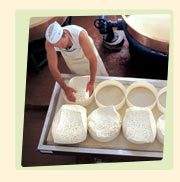 Each Asiago DOP producer must comply with strict regulations to ensure that every wheel of cheese is worthy of the Asiago DOP label. For instance, the milk used for Asiago cheese is selected from dairy herds with a strict feeding regimen. Once the cows are selected, the cheese makers also inspect the quality of the milk.
Each Asiago DOP producer must comply with strict regulations to ensure that every wheel of cheese is worthy of the Asiago DOP label. For instance, the milk used for Asiago cheese is selected from dairy herds with a strict feeding regimen. Once the cows are selected, the cheese makers also inspect the quality of the milk.As the cheese reaches a thicker consistency,
 the curd is cut and placed in a mold for forming. Next, the curd is worked with repeated cutting, salting and turning to give Asiago DOP its distinct taste. The curd is then placed in the mould again and pressed for compacting. Shortly after, the pre-salting operation begins, usually occurring for a period of 36 to 96 hours. The last step is the aging process.
the curd is cut and placed in a mold for forming. Next, the curd is worked with repeated cutting, salting and turning to give Asiago DOP its distinct taste. The curd is then placed in the mould again and pressed for compacting. Shortly after, the pre-salting operation begins, usually occurring for a period of 36 to 96 hours. The last step is the aging process.The Two Types of Asiago
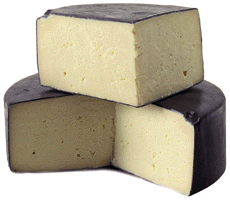
Mature Asiago DOP
 D’allevo, is made from skim cow’s milk and matures over a period of 3 to 12 months. More distinct in flavor, this dark, hard cheese can vary in the sharpness of its taste depending on the length of the aging period. It is stronger with respect to that of the pressed, fresh type and is reminiscent of the fragrance of yeast, dried fruit and occasionally one can even distinguish a note of boiled chestnuts. To the touch, it is fairly solid; slightly elastic if relatively young, and harder when fully matured. The darker shades of straw yellow typical of this variety can sometimes reach the intensity of amber. In the mouth, it reveals its distinct consistency and requires a longer time to masticate properly but it is also quite soluble. The sweet taste can acquire a somewhat more savory flavor and ranges to slightly piquant. The rich aroma becomes refined with seasoning and has notes of dried fruit, butter and can also be sometimes reminiscent of exotic fruits. After swallowing, the mouth retains the savory taste.
D’allevo, is made from skim cow’s milk and matures over a period of 3 to 12 months. More distinct in flavor, this dark, hard cheese can vary in the sharpness of its taste depending on the length of the aging period. It is stronger with respect to that of the pressed, fresh type and is reminiscent of the fragrance of yeast, dried fruit and occasionally one can even distinguish a note of boiled chestnuts. To the touch, it is fairly solid; slightly elastic if relatively young, and harder when fully matured. The darker shades of straw yellow typical of this variety can sometimes reach the intensity of amber. In the mouth, it reveals its distinct consistency and requires a longer time to masticate properly but it is also quite soluble. The sweet taste can acquire a somewhat more savory flavor and ranges to slightly piquant. The rich aroma becomes refined with seasoning and has notes of dried fruit, butter and can also be sometimes reminiscent of exotic fruits. After swallowing, the mouth retains the savory taste.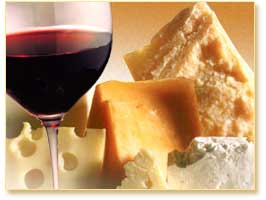 In addition to its sensory pleasures, Asiago DOP is a healthy source of protein. It is especially recommended for the elderly due to its easy digestion and high calcium content. Rich in vitamins A, B, B2, and PP, Asiago can be a healthy snack to eat alone or to add to any meal.
In addition to its sensory pleasures, Asiago DOP is a healthy source of protein. It is especially recommended for the elderly due to its easy digestion and high calcium content. Rich in vitamins A, B, B2, and PP, Asiago can be a healthy snack to eat alone or to add to any meal. It is a fine addition to an after-dinner cheese platter, where it should be served with a big, full-bodied red, like Lorraine Bracco's, Amarone Classico.
Veneto, Italy
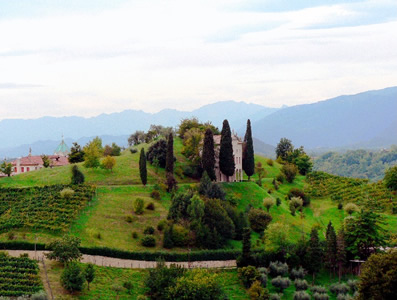 Ah, Italia! Is there any more romantic place on earth? Say the word Italy and it brings up visages of great architecture, The Alps, beautiful rolling hilsides. Speak of Venice and images of the Gondoliers, The Grand Canal and the wonderful aura of Renaissance History comes to mind.
Ah, Italia! Is there any more romantic place on earth? Say the word Italy and it brings up visages of great architecture, The Alps, beautiful rolling hilsides. Speak of Venice and images of the Gondoliers, The Grand Canal and the wonderful aura of Renaissance History comes to mind.
In keeping with our Passport to Wines focus on Bracco Wines and the great varieties from Italy, it is only fitting that we share with you the region that produces Asiago cheese.
Veneto or Venetia (Vèneto), is one of the 20 regions of Italy. Its population is about 4.8 million, and its capital is Venice. Once the cradle of the renowned Venetian Republic, then a land of mass emigration, Veneto is today among the wealthiest and most industrialized regions of Italy. Veneto's natural, historical, and artistic beauty make it, by far, the most visited region of Italy, with about 60 million tourists every year. Spoken languages are Italian, Ladin and Venetian. Recently, a motion to recognize Venetian as an official regional language has been approved by the regional Parliament.
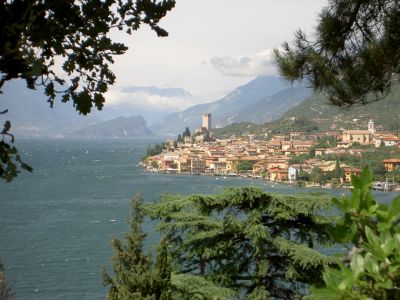 The population is concentrated in the Southern part, and mostly employed in agriculture in many small farms, specialized in maize, barley, soy bean and sugar-beet, vineyards producing highly renowned wines, fruit and vegetables. Fishing is also an important resource. Other specialized trades are goldsmithery in Vicenza, glass in Murano and lacework in Burano. Tourism is the most promising resource, first of all to world-famous Venice, but also to the Dolomite mountains, Lake Garda, the spa and seaside resorts, and the other great art cities of the region.
The population is concentrated in the Southern part, and mostly employed in agriculture in many small farms, specialized in maize, barley, soy bean and sugar-beet, vineyards producing highly renowned wines, fruit and vegetables. Fishing is also an important resource. Other specialized trades are goldsmithery in Vicenza, glass in Murano and lacework in Burano. Tourism is the most promising resource, first of all to world-famous Venice, but also to the Dolomite mountains, Lake Garda, the spa and seaside resorts, and the other great art cities of the region.
A Tour of Veneto
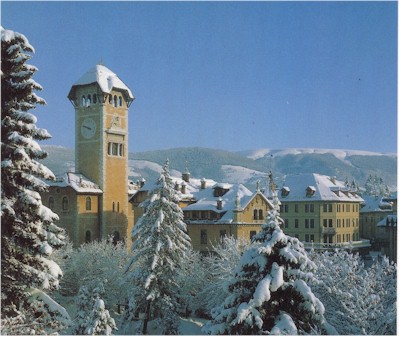
Asiago is the name of both a minor township and the surrounding plateau region in the Province of Vicenza in Northeastern Italy.
Although probably best known internationally as the origin of Asiago cheese, Asiago was also the site of a major battle between Austrian and Italian forces on the Alpine Front of World War I. It is a major ski resort destination as well as the site of the Astrophysical Observatory of Asiago, operated by the University of Padua.
_______________________________________________________
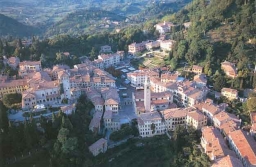 Asolo is known as "The Pearl of province of Treviso", and also as "The City of a Hundred Horizons" for its mountain settings. Asolo was the capital, and seat of the court of the fiefdom of Asolo, which was granted by the Republic of Venice to Caterina Cornaro, the former Queen of Cyprus. Caterina's personal theater was later purchased by Ringling (of Ringling Circus fame), crated up and shipped to Sarasota, Florida, where it was reassembled. The town was also home to the English poet Robert Browning.
Asolo is known as "The Pearl of province of Treviso", and also as "The City of a Hundred Horizons" for its mountain settings. Asolo was the capital, and seat of the court of the fiefdom of Asolo, which was granted by the Republic of Venice to Caterina Cornaro, the former Queen of Cyprus. Caterina's personal theater was later purchased by Ringling (of Ringling Circus fame), crated up and shipped to Sarasota, Florida, where it was reassembled. The town was also home to the English poet Robert Browning.
______________________________________________________
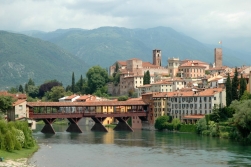 Bassano del Grappa was founded in the 2nd century BCE by a Roman called Bassianus as an agricultural estate. The symbol of the town is the covered wooden pontoon bridge, which was designed by the architect Andrea Palladio in 1569. The bridge was destroyed many times, the last time during WWII. The Alpine soldiers, or Alpini, have always revered the wooden bridge. After the destruction of the bridge, they took up a private collection and had the bridge completely rebuilt. Often soldiers flock to the bridge to remember and sing songs from their days as alpine soldiers. The artist Jacopo Bassano was born, worked, and died in Bassano and took it as his surname. Bassano Del Grappa is also famous for the spirit Grappa.
Bassano del Grappa was founded in the 2nd century BCE by a Roman called Bassianus as an agricultural estate. The symbol of the town is the covered wooden pontoon bridge, which was designed by the architect Andrea Palladio in 1569. The bridge was destroyed many times, the last time during WWII. The Alpine soldiers, or Alpini, have always revered the wooden bridge. After the destruction of the bridge, they took up a private collection and had the bridge completely rebuilt. Often soldiers flock to the bridge to remember and sing songs from their days as alpine soldiers. The artist Jacopo Bassano was born, worked, and died in Bassano and took it as his surname. Bassano Del Grappa is also famous for the spirit Grappa.
________________________________________________________
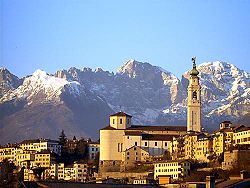 Belluno rises above a cliff spur near the confluence of the Torrente Ardo and the Piave River. The name of the city is derived from celtic belo-dunum which means "splendid hill". The name was inspired by the favorable position within the valley. The city was founded around 220-200 BC by the Romans and, starting from 181 BC, it became an important military stronghold in the Roman Venetia. To the north is the imposing Schiara range of the Dolomites, with the famous Gusela del Vescovà (Bishop's needle), and Mounts Serva and Talvena rising above the city. To the south, the foothills of the Alps separate Belluno from the Venetian plain.
Belluno rises above a cliff spur near the confluence of the Torrente Ardo and the Piave River. The name of the city is derived from celtic belo-dunum which means "splendid hill". The name was inspired by the favorable position within the valley. The city was founded around 220-200 BC by the Romans and, starting from 181 BC, it became an important military stronghold in the Roman Venetia. To the north is the imposing Schiara range of the Dolomites, with the famous Gusela del Vescovà (Bishop's needle), and Mounts Serva and Talvena rising above the city. To the south, the foothills of the Alps separate Belluno from the Venetian plain.
________________________________________________________
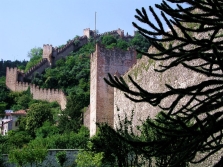
Marostica is mostly famous for its living chess event and for the local cherry variety. Every even year, in September, a game of chess using live pieces is played, an exhibition of armed men, foot-soldiers and knights, with fireworks and dances and music.
________________________________________________________
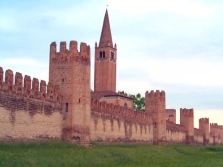
Montagnana is a town and comune in the province of Padova. Its famous medieval walls are one of the best preserved examples of medieval walls in Europe. Two of the 20th Century's greatest operatic tenors, Giovanni Martinelli and Aureliano Pertile, were both born in the town in 1885.
________________________________________________________
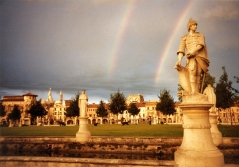 Padua is picturesque, with a dense network of arcaded streets opening into large communal piazze, and many bridges crossing the various branches of the Bacchiglione, which once surrounded the ancient walls like a moat. Padua has long been famous for its university, founded in 1222. The list of professors and alumni is long and illustrious, containing, among others, the anatomist Vesalius, Copernicus, Fallopius, Fabrizio d'Acquapendente, Galileo Galilei, Pietro Pomponazzi, Reginald, later Cardinal Pole, Scaliger, Tasso and Sobieski. Padua is the setting for most of the action in Shakespeare's The Taming of the Shrew.
Padua is picturesque, with a dense network of arcaded streets opening into large communal piazze, and many bridges crossing the various branches of the Bacchiglione, which once surrounded the ancient walls like a moat. Padua has long been famous for its university, founded in 1222. The list of professors and alumni is long and illustrious, containing, among others, the anatomist Vesalius, Copernicus, Fallopius, Fabrizio d'Acquapendente, Galileo Galilei, Pietro Pomponazzi, Reginald, later Cardinal Pole, Scaliger, Tasso and Sobieski. Padua is the setting for most of the action in Shakespeare's The Taming of the Shrew.
________________________________________________________
 Verona is the city of the most famous lovers in history: Romeo and Juliet. It is one of the cities that has better preserved its artistic heritage in Italy. Verona's Natural History Museum contains one of the most valuable collections of fossils and archaeological remains of Europe. Verona was the town that Julius Caesar selected for his relaxing stays.
Verona is the city of the most famous lovers in history: Romeo and Juliet. It is one of the cities that has better preserved its artistic heritage in Italy. Verona's Natural History Museum contains one of the most valuable collections of fossils and archaeological remains of Europe. Verona was the town that Julius Caesar selected for his relaxing stays.
The Romeo & Juliet Balcony
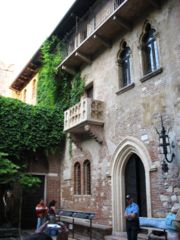
In its history, many important names and events happened that were relevant for the European 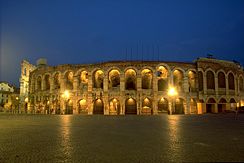 history, like Theodoric the Great, king of Ostrogoths, Alboin and Rosamunda, the Lombard Dukes, Charlemagne and Pippin of Italy, Berengar I, Dante. Conclaves were held here, as were important congresses. Verona was in the travel diaries of Goethe, Stendhal and Paul Valéry.
history, like Theodoric the Great, king of Ostrogoths, Alboin and Rosamunda, the Lombard Dukes, Charlemagne and Pippin of Italy, Berengar I, Dante. Conclaves were held here, as were important congresses. Verona was in the travel diaries of Goethe, Stendhal and Paul Valéry.
_______________________________________________________
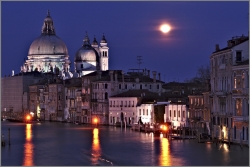 Venice has been known as the "La Dominante", "Serenissima", "Queen of the Adriatic", "City of Water", "City of Bridges", and "The City of Light". It is considered by many to be one of the most beautiful cities in the world. The kaleidoscopic scenario born of an amazing, intricate and harmonious communication network of water and stone casts light and shadows, unique in the world, upon a city already singular for its art, history and culture.
Venice has been known as the "La Dominante", "Serenissima", "Queen of the Adriatic", "City of Water", "City of Bridges", and "The City of Light". It is considered by many to be one of the most beautiful cities in the world. The kaleidoscopic scenario born of an amazing, intricate and harmonious communication network of water and stone casts light and shadows, unique in the world, upon a city already singular for its art, history and culture.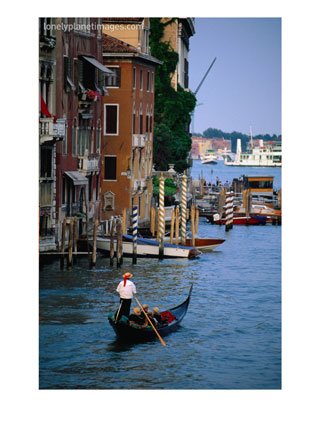
Venice is world-famous for its canals. It is built on an archipelago of 118 islands formed by about 150 canals in a shallow lagoon. The islands on which the city is built are connected by about 400 bridges. In the old center, the canals serve the function of roads, and every form of transport is on water or on foot. In the 19th century a causeway to the mainland brought a railway station to Venice, and an automobile causeway and parking lot was added in the 20th century. Beyond these land entrances at the northern edge of the city, transportation within the city remains, as it was in centuries past, entirely on water or on foot. Venice is Europe's largest urban car free area, unique in Europe in remaining a sizable functioning city in the 21st century entirely without motorcars or trucks.
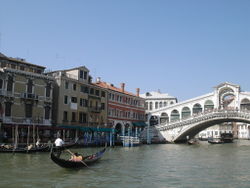 During the 16th century, Venice became one of the most important musical centers of Europe. By the end of the 15th century, Venice had become the European capital of printing, being one of the first cities in Italy to have a printing press after those established in Germany. The most important printing office was the Aldine Press of Aldus Manutius, which in 1499 printed the Hypnerotomachia Poliphili, considered the most beautiful book of Renaissance, and established the modern punctuation, page format and italic type, and the first printed the work of Aristotle.
During the 16th century, Venice became one of the most important musical centers of Europe. By the end of the 15th century, Venice had become the European capital of printing, being one of the first cities in Italy to have a printing press after those established in Germany. The most important printing office was the Aldine Press of Aldus Manutius, which in 1499 printed the Hypnerotomachia Poliphili, considered the most beautiful book of Renaissance, and established the modern punctuation, page format and italic type, and the first printed the work of Aristotle.
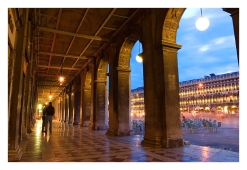 The buildings of Venice are constructed on closely spaced wood piles, which were imported from Russia, (under water, in the absence of oxygen, wood does not decay) which penetrate alternating layers of clay and sand. Wood for piles was cut in the most western part of today's Slovenia, resulting in the barren land in a region today called Kras, and in two regions of Croatia, Lika and Gorski kotar (resulting in the barren slopes of Velebit). Most of these piles are still intact after centuries of submersion. The foundations rest on the piles, and buildings of brick or stone sit above these footings. The buildings are often threatened by flood tides pushing in from the Adriatic between autumn and early spring.
The buildings of Venice are constructed on closely spaced wood piles, which were imported from Russia, (under water, in the absence of oxygen, wood does not decay) which penetrate alternating layers of clay and sand. Wood for piles was cut in the most western part of today's Slovenia, resulting in the barren land in a region today called Kras, and in two regions of Croatia, Lika and Gorski kotar (resulting in the barren slopes of Velebit). Most of these piles are still intact after centuries of submersion. The foundations rest on the piles, and buildings of brick or stone sit above these footings. The buildings are often threatened by flood tides pushing in from the Adriatic between autumn and early spring.



